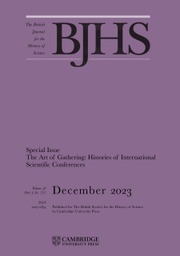Intoxicated by Mel Y. Chen is a curious book that is at times difficult and testing to read. It is hard to review a book that does not claim to have a thesis. This indeterminacy is the hallmark of Intoxicated, which makes up the work’s ‘cripped’ methodology.
The routine, academic expressions that are used to describe the author’s approach on the book’s jacket – ‘focus on’, ‘explores’, ‘charts’ – belie the radical departure entailed within it. On the surface, Intoxicated ‘explores’ the ‘race–disability nexus’ through a small selection of case studies. It considers in an unorthodox manner the connections between race and disability that emerged throughout the nineteenth century. Included is John Langdon Down’s researches on and constructions of Down syndrome, and how Down’s patients were racialized and presented as an inferior, quasi-‘Asian’, disabled ‘race’. Chen’s second case study deals with Australian legislation about opium that sought to reduce opium usage among Aboriginal groups, but that was also about establishing control over them. Chen uses these examples – with a discussion about the exhibition Black Opium, by Badtjala artist Fiona Foley at the Queensland State Library – to parse open ties and associations between race and disability.
These case studies generally correspond to the first and second chapters, while the third chapter provides a forum to develop Chen’s methodological innovation: the process of unlearning, or ‘intoxicated method’. Because of this ‘intoxication’, each of the chapters flows into the next, leaving scattered, anecdotal and deeply personal reflections to make up the bulk of the narrative. Some of these reflections arise from Chen’s interest in unravelling traditional pedagogies, as Chen holds standard university research responsible for rehashing old and harmful logic, and for ‘disciplining’ students and their minds. Hence a new form of thinking and writing is needed that avoids positing ‘final answers’ or making emphatic declarations, which are cloaked in the artifice of a comprehensively footnoted analysis.
One defining feature of this method of ‘unlearning’ involves disrupting traditional, linear narratives, or ‘colonized time’. The dynamics, processes and nexuses on which the book is nominally focused are touched upon, occasionally broached, and sporadically noted in a piecemeal and deliberately non-holistic fashion. The author muses on aspects of the race–disability nexus in this odd and disruptive work far more than exploring or charting it. Indeed, these expressions conjure images of colonial scientific exploration that Chen might well spurn. It is on language, however, that Intoxicated is particularly strong. The use of the phrase ‘the pedagogy of physics’ in a stream of thoughts about ‘fail vids’ that demonstrate ‘white bodies’ becoming partially disabled is an example of one of the many impactful turns of phrase in Intoxicated. Chen’s reflections on English etymologies and metonyms that bind race and disability are peculiarly illuminating, not least in how they gesture to the author’s expertise (if such a thing exists) in critical linguistics.
This ‘intoxicated’ method cleverly reuses a core historical theme of the book: toxicity – that is, the ingestion, misuse and abuse of toxic substances. Chen is interested in how Langdon Down used opium to control his patients, and uses archival material in London to understand how Down achieved this. The book often deviates from the archive and makes only cursory use of it because of its commitment to unlearning. ‘Intoxication’ still appears in moments to be a strangely powerful device that strikes at the heart of the fallacies inherent in modern scholarship. Historical accounts appear rigorous and bullet-proof when they are assembled with material ‘from the archive’. ‘Unlearning’ demands more than older critiques of historical practice in that it encourages scholars to rethink – with concepts from disability studies – how research ought to be presented and conducted. Chen deconstructs this pretext in language that is sometimes convoluted and frustratingly opaque – though in other moments the book’s prose is beautiful and innovative. Intoxicated is therefore a complicated text, without any easy conclusions springing from it.
Historians who are interested in Down, Down syndrome and race and medicine in Britain during the late nineteenth century more broadly might be exasperated by the author’s refusal to fully delve into primary historical material. It is not clear from Chen’s brief foray into their sources in the first chapter of the book how exactly the ‘Mongoloid’ descriptor emerged, or what exactly the mechanisms and processes were by which this category was assembled. Scholars whose own work touches on these topics will have to look elsewhere, or to their own sources, for answers.
The book is about its author as much as it is about Down and the Opium Acts of the 1890s. Chen’s narrative is interspersed with personal reminiscences about navigating American academia as an Asian American scholar with disabilities. This is a strength of the work. Yet the American-centred nature of the reflections, which range from discussions about the Black Lives Matter movement and the 6 January 2021 occupation of the Capitol building, makes the idea that the book interrogates ‘transnationality’ less convincing. The US-focused positioning of Intoxicated is perhaps one of reasons why the book contains some minor errors pertaining to non-English languages. For instance, the Arabic phrase for poppy, ‘father of sleep’, reads abu al-num rather than abu an-num (p. 58). Readers might also be left wondering whether more a precise contextualization could have been given for ‘Chinese people’ and ‘Chinese bodyminds’.
Regardless of these stylistic eccentricities, and the fact that Intoxicated is a difficult and occasionally vexing read, this nevertheless deserves to be read by historians of science, specifically those who write about medicine, disability and colonialism. It is an important addition to the growing literature combining critical race theory and queer, disability and animal studies and will surely challenge the ideas and enrich the vocabulary of historians of science for some years to come.



